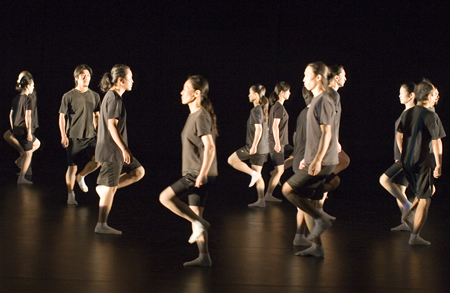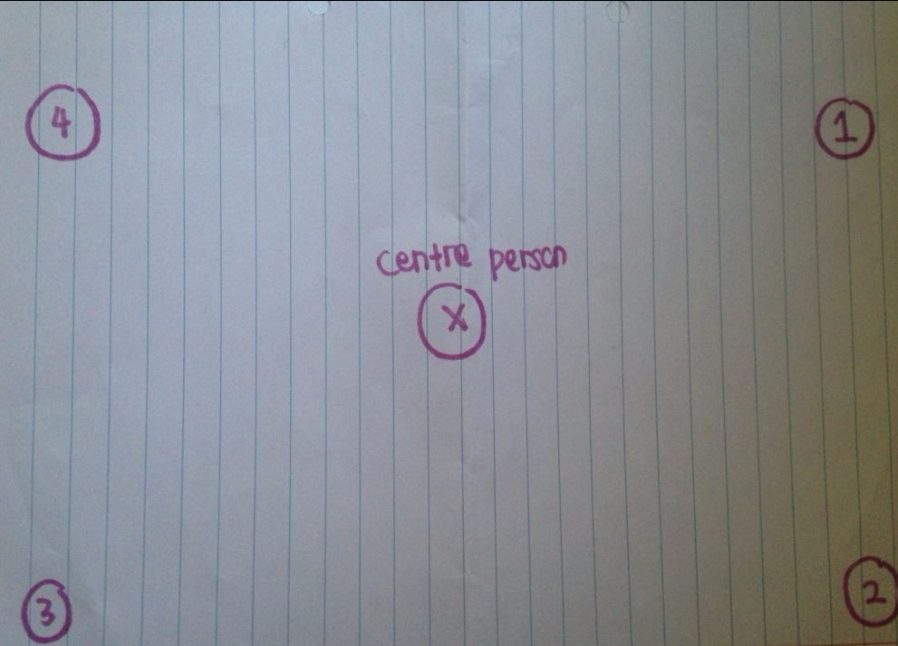From the beginning, I’m really interested in physical theatre as it involves a lot of movement and no/less words used. I think it’s amazing how different kinds of movement can be used to communicate ideas and create stories. At first, I wanted to do Physical Theatre by Dymphna Calley but I feel like I wanted to explore something more unique. Thus, I decided to do Actor’s Body by Tadashi Suzuki for this task.

Theorist: Tadashi Suzuki
A little bit about him, Tadashi Suzuki, he is the founder and director of Suzuki Company of Toga (SCOT) based in Toga Village. He plays an important role in many organizations such as Japan’s first international theatre festival (Toga Festival), Shizuoka Performing Arts Centre (1995-2007) and International Theatre Olympics Committee and Beseto Festival. Other than that, he created the Suzuki Method of Actor Training and he was Chairman of the Board of Directors for Japan Performing Arts Foundation (2000-2010).
Suzuki has number of books where he expressed his theories. His collection of writing in English are The way of acting (1986) and Culture is the body (2015). He is not just one of the world’s outstanding theatre director and a writer, Suzuki is also a creative thinker and practitioner whose work has a powerful influence on theatre everywhere. Suzuki dealt with the structure of a theatre group, the creation and use of theatrical space, and the overcoming of cultural and national barriers. He also established one of the largest theatre centers in the world in Toga. Both as the director creating multiples productions and the festival producer, he brought people from around the world together with the purpose to share theatrical endeavor and approach fundamental issues of our times.
List of Suzuki’s work:
- “On the Dramatic Passions”
- “The Trojan Women”
- “Dionysus”
- “King Lear”
- “Cyrano de Bergerac”
- “Madame de Sade”
List of Suzuki’s international collaboration:
- “The Tale of Lear”
- “Oedipus Rex”
- “Electra”
The theory: Actor’s body

In his article “Culture is the Body”, Tadashi Suzuki divides energy into two which are animal energy produced by humans and animals and non-animal energy such as electricity, petroleum and nuclear power. He believes that a society that sustained animal energy has quite different characteristics from the one that doesn’t. Most of people in this world thinks that a modern and industrialization society is often considered as the civilized one. Suzuki, however, has a different opinion about that. He believes that “A society is one in which the perceptive and expressive abilities of its people are cultivated through the use of their innate animal energy. Such animal energy fosters the sense of security and trust needed for healthy communication in human relationships and the communities they form… a civilized society is not necessarily a cultured one.”
Suzuki also believed that technologies are conquering the world and how people misunderstood the concept of civilization and modernization. He also stated that “some sociologists in the United States apply to differentiate modernized from pre-modernized societies is the ratio of animal to non-animal energy employed in production processes”. According to his theory which is the opposite, in order to determine one’s modernization is to calculate the amount of non-animal energy it consume. Countries like United States and Japan itself consumed high non-animal energy as it requires a lot for industrial processes whereas Africa and near east consumed less.
He later applied this theory to theatre where he noticed that today’s stage productions are exposed to modernization and rely a lot on non-animal energy. For example, electricity powers for lighting, sound equipment, stage lifts and turntables. However, Japanese Noh is one of those that survives as a form of pre-modern theatre that requires no non-animal energy in terms of music, costumes, masks and the stage itself. All of these comes from the performers directly or hand-made. Although electric lights help to illuminate the Noh stage nowadays, it wasn’t used or kept to a minimum back then. Suzuki stated that “Noh is pervaded by the spirit of creating something purely out of human skill and effort—so much so that it can be thought of as an epitome of the pre-modern theatre. It is an endeavor driven by animal energy.”
Suzuki Method of Actor Training
Fundamental technique and theory of acting
- To act, one must have a point of view.
“Acting is the formal act or experiment that tries to convey a particular point of view, derived from an investigation of human behavior and relationships. Acting is an art form, creatively examining how human beings exist within the systems and groups that maintain social life. It follows that an actor’s performance is driven by a desire to make others re-evaluate the world and perceive it anew, both collectively and as individuals.” – SCOT Philosophy
2. For acting to begin, one must have an audience.
“A heightened awareness of displaying one’s body and communicating written language can only be achieve when another person observes it. Even though actors may not be able to see themselves or the others sitting in from of them, them can still be aware of a presence – be it a human, animal or god – that is watching their movements and hearing their language. Once actors perceive this presence outside of themselves in space, they quickly form a desire to communicate their point of view, stimulating this presence with a written text made flesh through physical and vocal craft.” – SCOT Philosophy
3. To sustain acting, an awareness of the invisible body is required.
” A human being’s most important daily needs are (1) energy production (2) breath calibration and (3) center of gravity control. Since none of the phenomena energy and centre of gravity can e seen with the naked eye, they do not receive a lot of attention in our daily life. However, as soon as we have problems with any of them it becomes difficult to maintain our health and participate in modern society. This is due, in part, to the inter dependency of these particular functions. Training exists, then, not only to grow our capacity in each of these functions independently, but also to deepen and fortify their interrelation. The more we are able to fluidly expand the process of producing energy, taking in oxygen and maintaining balance our centre of gravity, the more variety of movement becomes available to us, in which turn increases the stability and sustainability of life. Through disciplined integrated development of the parameters, the holy gains strength and agility the voice acquires range and capacity and an awareness of the other’s grows. Such work develops the expressive potency needed to transmit the actor’s point of view. It follows then that the care requirements for the art of acting lie in disciplines created to deepen an awareness of these three crucial, interrelated “invisible” phenomena.” – SCOT Philosophy
Suzuki created “The Suzuki Method of Training” to prepare understanding of above fundamentals by disorient the center of gravity, disrupt the breath and challenge the limits of physical and emotional experience. This collection of exercises are designed to challenge actor’s body, breath and awareness.
Goals for the actor’s during training:
- Understand the different ways in which the feet contact the floor.
- Breathe through the nose.
- When stomping, send the energy through the floor into the ground, not onto it.
- Keep the upper body free but strong.
- Be constantly focused and aware.
- Lose yourself in fiction.
- Maintain a blank expression or “cool face”.
- Keep the lower body constantly engaged and powerful underneath the center of gravity to support the breath and the vocal instrument.
Work Cited :-
http://www.scot-suzukicompany.com/en/philosophy.php








